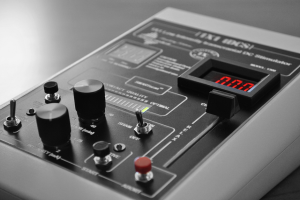transcranial Direct Current Stimulation
tDCS Therapy is a non-systemic (does not circulate in the bloodstream throughout the body) and non-invasive (does not involve surgery) form of neuromodulation, which stimulates nerve cells in an area of the brain that is linked to depression, by delivering a mild direct electrical current (DC).
The Soterix Medical 1×1 tDCS Low-Intensity Stimulator device is approved in the European Union for the treatment of depression.
Patients being treated by tDCS do not require anesthesia or sedation and remain awake and alert.
It is a 30-minute outpatient procedure that is prescribed by a psychiatrist and performed in a psychiatrist’s office.
The treatment is typically administered daily for 3-6 weeks depending upon patient response.
Contact us to learn more about tDCS or make an appointment.
Frequently Asked Questions
- What is tDCS?
- What is the 1×1 tDCS Low-Intensity Stimulator device?
- How does it work?
- When does the treatment occur?
- Who are good candidates?
- Where was the treatment developed?
- Where can I read peer reviewed papers that have been published in scientific journals?
- Is tDCS approved by the FDA?
- Is the tDCS Therapy covered by insurance?
- How much does the tDCS Therapy cost?
- Does tDCS cause discomfort?
1. What is tDCS?
Transcranial Direct Current Stimulation (tDCS) is a neuromodulation device that may be a safe, effective treatment option for depression. tDCS has been investigated as a treatment for neurological and psychiatric diseases since the 1960s. Unlike other neuromodulation devices for the treatment of depression such as electroconvulsive therapy (ECT), transcranial magnetic stimulation (TMS) or vagal nerve stimulation (VNS) which are FDA-cleared, tDCS is not FDA-cleared and is only used on an investigational or experimental basis in the US.
2. What is the 1×1 tDCS Low-Intensity Stimulator device?
The 1×1 tDCS Low-Intensity Stimulator device manufactured by Soterix Medical is a non-invasive therapy approved in the European Union for the treatment of Major Depression. The Soterix Medical 1×1 tDCS Low-Intensity Stimulator device is the first and only optimized tDCS based system approved for the safe and clinical treatment of depressive symptoms.
3. How does it work?
While seated in the treatment chair, saline infused electrode patches are positioned on the forehead using a specially designed strap. Wires connect the patches to a small battery-powered device. For approximately 30 minutes, mild direct electrical current (DC) then stimulate specific positions of the brain according to past experimental protocols empirically demonstrated to be effective for reducing symptoms of depression. Patients typically report a mild tingling sensation during the session that stops at the end.
4. When does the treatment occur?
Patients receive tDCS at their doctor’s office based on a schedule that is convenient to them. Current protocol for depression consists of daily treatments (Monday-Friday) for 4-6 weeks.
5. Who are good candidates?
Patients may try the tDCS Therapy if they have been diagnosed with major depression and the symptoms are not successfully managed with drug medication or there are bad side-effects from the drug medication. tDCS is a non-drug therapy with no significant side effects.
6. Where was the treatment developed?
The 1×1 tDCS Low-Intensity Stimulator device was invented by an international team of doctors and researchers at Soterix Medical in New York City. The 1×1 tDCS Low-Intensity Stimulator device is the first clinical system using tDCS to treat major depression that is available to patients throughout the European Union.
7. Where can I read peer-reviewed papers that have been published in scientific journals?
Please visit the publications page at www.soterixmedical.com/depression/physicians.
8. Is tDCS approved by the FDA?
tDCS is not the first line of treatment for depression as it has not been approved by the FDA. However, several studies (see above) have proven tDCS to be safe. Use of tDCS in the USA is investigational or experimental.
9. Is the tDCS Therapy covered by insurance?
No, at this time tDCS is not covered by insurance. Please check back regularly for updates on reimbursement.
10. How much does the tDCS Therapy cost?
The doctor will discuss billing options with you. Typically, patients pay per session with 3-6 weeks of regular therapy recommended. Often, after benefiting from tDCS Therapy, patients may choose to visit their doctor again if symptoms return, for a “booster” or maintenance session.
11. Does tDCS cause discomfort?
Patients typically report a mild tingling or burning sensation which subsides at the end of the treatment session.

